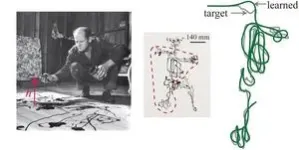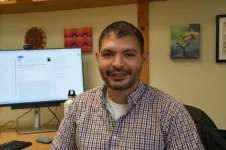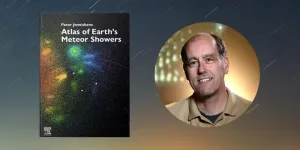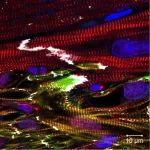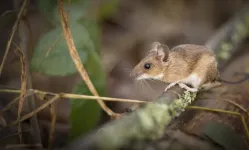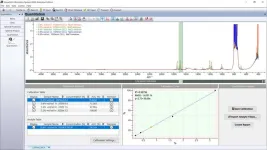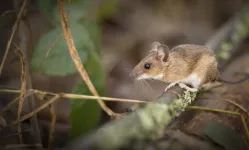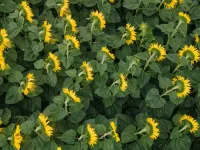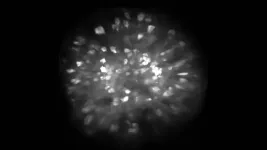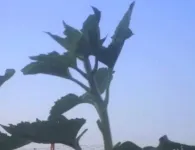(Press-News.org) New research led by a Florida State University professor shows that potential adaptive responses by sea turtles, such as shifting the timing of when they nest, may not be enough to counteract the projected impacts from climate change on hatchling production.
Warmer temperatures cause lower hatchling success and a greater percentage of female turtles, both of which can disrupt the viability of a species. Sand temperatures at sea turtle nesting sites globally are projected to increase by about 0.6 degrees Celsius to about 4.2 degrees Celsius by 2100.
To examine how sea turtles might cope with higher temperatures, researchers with the study, led by Department of Earth, Ocean and Atmospheric Science Associate Professor Mariana Fuentes, gathered data from 24 nesting sites across the world used by four species of sea turtles: green, loggerhead, hawksbill and olive ridley turtles.
They used their data to predict how turtles might shift the timing of nesting and what hatchling success they might expect. The research was published today in Global Change Biology.
“We have already observed that sea turtles are nesting earlier to align with optimal environmental conditions,” Fuentes said. “Sea turtles in the past have adapted to climate changes by changing the timing of their nesting or the distribution of their nesting sites, but we have found that even if they do change the timing of their nesting, that’s not going to be sufficient to maintain the temperatures of current nesting grounds.”
To maintain incubation temperatures in the sites the researchers examined, sea turtles will have to nest between 20 to 191 days earlier, or 54 to 180 days later. But in about half the sites, median incubation temperature will always be warmer than the 75th percentile of current ranges.
Turtles nesting further from the equator will be more able to counteract the impacts of warming. Those that nest closer to the equator will be most affected.
Because temperature is so important to sea turtle egg incubation, scientists have long studied them for insight into how wildlife might adapt as temperatures rise. Different sea turtle species have existed for millions of years and adapted to previous changes in the Earths’ climate, but the rate of change is much faster now. Researchers did not examine population viability in this study, but if fewer hatchlings are being produced, in 100 years there will be some locations that have lower hatchling productivity.
“Skeptics may say that sea turtles have been around for a long time and have adapted, but we’re showing that the adaptations that they might undertake are not going to be sufficient to counteract projected impacts,” Fuentes said.
The study involved 52 collaborators from universities in the U.S., Mexico, Qatar, France, Australia, Turkey, Cyprus, Brazil, India, Malaysia, Guinea-Bissau, Indonesia, South Africa, Spain, French Polynesia, El Salvador and the United Kingdom. The research was supported by the National Science Foundation and by several other institutions that funded the field component of the work.
END
FSU-led research shows shifting nesting timing not enough to prevent fewer sea turtle hatchlings
2023-10-31
ELSE PRESS RELEASES FROM THIS DATE:
Study aims to remove barriers to veterans seeking mental health services
2023-10-31
Suicide and mental health distress disproportionately affect veterans in the United States. According to a report from the Substance Abuse and Mental Health Services Administration, more than 5 million veterans suffered from these adverse behavioral health issues in 2020. That same year, after adjusting for age and sex differences in the population, the U.S. Department of Veterans Affairs (VA) estimated that veterans were 57.3 percent more likely to commit suicide than non-veterans.
While the Veterans ...
The first ‘birder’s guide’ to meteor showers
2023-10-31
The First ‘Birder’s Guide’ to Meteor Showers
Peter Jenniskens new comprehensive guide describes over 500 meteor showers that appear in our night skies.
October 31, 2023, Mountain View, CA -- The SETI Institute is proud to announce a new book by SETI Institute meteor astronomer Dr. Peter Jenniskens. Called “Atlas of Earth’s Meteor Showers,” this comprehensive guide describes over 500 meteor showers that appear in our night skies and adds a wealth of detail to the tapestry of our solar system.
“Just as in a birder’s guide, the book describes the outward appearance, ...
Better access to diagnostic tests raises incidence of thyroid cancer in more affluent areas
2023-10-31
The incidence of thyroid cancer in São Paulo State, part of Brazil’s relatively developed Southeast region, varies considerably according to socioeconomic status (education, poverty, wealth, income, segregation, mobility, and access to resources and services) and access to screening, but is highest in higher-income areas and the state capital. Mortality rates are similar across regions and income groups, however.
These are the main findings of a study reported in the journal Endocrine Practice by researchers ...
Combining cell types may lead to improved cardiac cell therapy following heart attack
2023-10-31
Researchers at the University of Wisconsin–Madison and Academia Sinica of Taiwan have harnessed a combination of lab-grown cells to regenerate damaged heart muscle.
The study, published in Circulation — which addresses major challenges of using heart muscle cells, called cardiomyocytes, grown from stem cells — takes a crucial step toward future clinical applications.
Previous research has shown that transplanting cardiomyocytes made from induced pluripotent stem cells (iPSC) can replace muscle in the hearts of mammals. Researchers have struggled to bring the treatment to the clinic, in part because the implanted cells haven’t developed enough ...
Cary Institute to co-lead $4.8 million study on how environmental conditions shape viral outbreaks in wild rodents
2023-10-31
When, where, and why do diseases jump from animals to people? A new project will monitor how changing seasons, land use, and human behavior influence viral outbreaks in wild rodent populations, to identify hotspots with high potential for spillover into people. The project is co-led by Barbara Han, a disease ecologist at Cary Institute of Ecosystem Studies, in an international team of scientists from the Smithsonian Institution, Royal Veterinary College, Oxford University, and the University of ...
Wiley announces the release of KnowItAll 2024 with new multi-technique quantitation tool and additional advances for spectral analysis workflows
2023-10-31
Hoboken, NJ — October 31, 2023 — Wiley, a knowledge company and global leader in research, publishing and knowledge solutions, today announced the release of the KnowItAll 2024 Analytical Edition, the latest version of its spectral software that offers solutions to analyze, identify, quantify, and manage analytical and chemical data.
When it comes to chemical quantitative analysis, researchers often find themselves navigating multiple software packages. Mastering multiple software packages to achieve the same level of expertise, reproducibility, and ...
Cary Institute to co-lead $4.8M study on how environmental conditions shape RNA virus outbreaks in wild rodents
2023-10-31
When, where, and why do diseases jump from animals to people? A new project will monitor how changing seasons, land use, and human behavior influence viral outbreaks in wild rodent populations, to identify hotspots with high potential for spillover into people. The project is co-led by Barbara Han, a disease ecologist at Cary Institute of Ecosystem Studies, in an international team of scientists from the Smithsonian Institution, Royal Veterinary College, Oxford University, and the University of Glasgow.
Until now, it has been difficult to study how changing environmental conditions impact virus transmission in the wild. With $2.9 million in funding ...
For the sunflower, turning toward the sun requires multiple complex systems
2023-10-31
A sunflower’s ability to track the sun east to west during the day, and to face east again before the next sunrise, relies on multiple types of photoresponses, according to a new study publishing October 31st in the open access journal PLOS Biology by Stacey Harmer and colleagues at the University of California Davis, US. The results deepen the understanding of this well-known plant behavior, and upend previous assumptions about its dependence on a canonical light-dependent response pathway.
Because plants are ...
Smells like learning
2023-10-31
Order wine at a fancy restaurant, and the sommelier might describe its aroma as having notes of citrus, tropical fruit, or flowers. Yet, when you take a whiff, it might just smell like … wine. How can wine connoisseurs pick out such similar scents?
Cold Spring Harbor Laboratory (CSHL) Associate Professor Saket Navlakha and Salk Institute researcher Shyam Srinivasan may have the answer. They have found that certain neurons allow fruit flies and mice to tell apart distinct smells. The team ...
How sunflowers see the sun
2023-10-31
Sunflowers famously turn their faces to follow the sun as it crosses the sky. But how do sunflowers “see” the sun to follow it? New work from plant biologists at the University of California, Davis, published Oct. 31 in PLOS Biology, shows that they use a different, novel mechanism from that previously thought.
“This was a total surprise for us,” said Stacey Harmer, professor of plant biology at UC Davis and senior author on the paper.
Most plants show phototropism – the ability to grow toward a ...

